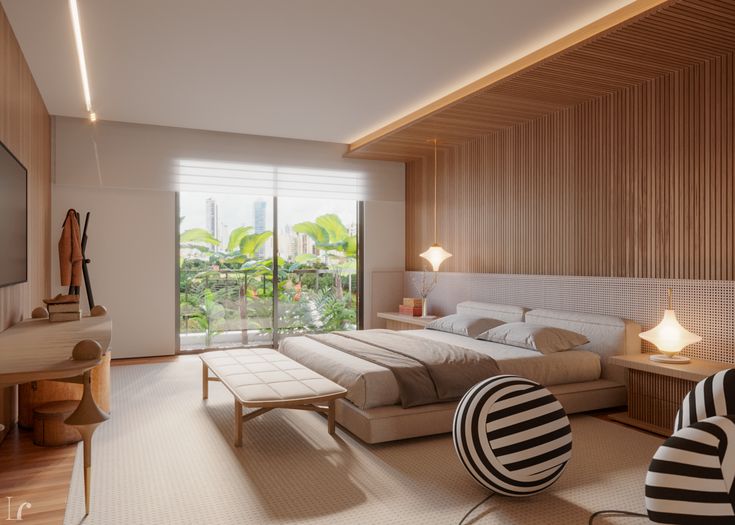Lighting plays a crucial role in enhancing the ambiance and functionality of any space. Whether you’re looking to create a cozy, relaxing bedroom or a stylish and contemporary vibe, the right lighting can transform your room. Here’s a detailed guide on how to strategically place lights in your bedroom, highlighting key areas and ensuring a perfect balance between aesthetics and practicality.
Step 1: Understand the Room Size
Before diving into lighting options, it’s important to consider the size of your room. For example, let’s assume your bedroom is approximately 12×12 feet. Dividing the room into smaller sections can help you visualize where each light should go. A good technique is to break the room into 3-foot by 3-foot squares, which will help you plan the coverage area for each light fixture.
Step 2: Identify Key Areas to Highlight
Think about the focal points in your bedroom, such as your bed, dresser, and TV unit. You should highlight these areas with specific lighting to draw attention and create a pleasing effect. For instance, place spotlights over the bed and the TV unit, ensuring that each light covers a 3-foot radius.
Step 3: Placing the Lights
When placing the lights, it’s essential to focus on creating layers of light to avoid overwhelming the space. For example, one light above the bed should only illuminate a corner, while another can light up the dresser. This way, not every part of the room is overly lit, preserving the shadow effect, which adds depth and character.
Step 4: The Importance of Light Angle and Depth
The beam angle of the light plays a key role in how effectively it illuminates the space. Consider placing your lights at least one foot away from the walls, and make sure that the light depth isn’t too shallow or too deep. A good rule of thumb is that if your ceiling height is around 8 to 9 feet, the light should be about 2 inches deep for optimal illumination.
Step 5: Choosing the Right Light Types
There are different types of lighting for various moods and functionalities. Here are some options:
- White Light: Ideal for focus, white light helps you stay alert and is perfect for reading or working.
- Warm Light: This type creates a relaxed, calm atmosphere. It’s best used in spaces meant for resting or unwinding, like the bedroom.
- Natural Light: Simulate the outdoors with natural light. It’s great for living areas and kitchens where a bright, energizing environment is needed.
Step 6: Lighting Layout for a Cozy Atmosphere
To avoid harsh lighting, ensure that the fixtures are well-distributed throughout the room. For example, spotlights placed near the walls can create a subtle, warm glow, and overhead lights should be placed at an appropriate distance to avoid direct glare.
Step 7: Ideal Wattage and Number of Lights
To calculate how many lights you need for a room, start by determining the area of your bedroom. If your room is 10×10 feet (100 square feet), and you’re using 10-watt lights, you can use a simple formula:
- Room Area (in sq. ft.) × 0.6 = Required Wattage
- For a 100 sq. ft. room, you’d need 60 watts, which translates to about six 10-watt lights.
You can adjust this number based on your preference for brightness and the type of light you choose.
Step 8: Experiment with Multi-Function Lighting
If you want flexibility, go for lights with adjustable color temperatures. Many modern lights now come with the option to switch between warm, cool, and natural light based on your mood or time of day.
Conclusion
By strategically placing lights and choosing the right type for your bedroom, you can create the perfect ambiance that suits both your functional needs and aesthetic preferences. With a few smart tricks, you can turn your bedroom into a beautiful and cozy sanctuary.

